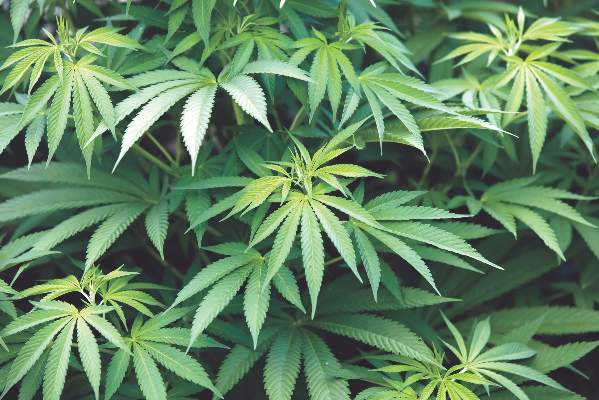User login
Heavy marijuana use by men aged 18 or 19 years is associated with a greater risk of mortality by age 60, a longitudinal study of more than 45,000 subjects shows.
The findings, published online April 22, might surprise some, wrote Dr. Edison Manrique-Garcia, a researcher at the Karolinska Institutet, Stockholm, and his colleagues, because a previous study of the same cohort found no such associations. “However, in this longer-term follow-up, the cohort members had reached an age where the detrimental somatic effects of cannabis use were more likely to be apparent,” they wrote (Am J Psychiatry. 2016 Apr 22. doi: 10.1176/appi.ajp.2016.14050637).
Using the Swedish National Cause of Death Register, Dr. Manrique-Garcia and his colleagues analyzed data from a cohort of 50,373 male 18- and 19-year-olds who entered compulsory military service in 1969 and 1970. Because marijuana use information on 4,998 of the subjects was missing, the final analysis included 45,375 subjects.
Dr. Manrique-Garcia and his coauthors found that, from the time of conscription to 2011, there had been 3,918 deaths out of the 45,375 men. Those who had reported ever using marijuana were shown to have died earlier than those who had never used the drug. After adjusting for confounders, the investigators also found a significantly higher risk of death, with a hazard ratio of 1.4, in those who had used marijuana 50 or more times, compared with a hazard ratio of 0.9 in those who had used it 1-50 times.
All marijuana users in the study also were found to have sustained higher rates of mortal injuries, whether accidental or purposefully inflicted, when compared with those who had never used the drug, although the investigators reported that they did not find a correlation between increased suicide risk and marijuana use.
Dr. Manrique-Garcia and his colleagues also reported that, although they found a three- to fourfold greater mortality risk among men with a diagnosis of psychosis, “the risk did not differ between marijuana users and nonusers.” In addition, the investigators did not find a significant interaction between marijuana use and psychotic disorder diagnoses with regard to an increased mortality risk.
The investigators said that their results, while valuable, are limited by the lack of data on lifetime use of marijuana. The results also are limited by the absence of information about tobacco smoking and risky alcohol use among the men after conscription.
“Study limitations notwithstanding, we found that subjects with a baseline history of heavy use of cannabis have an increased risk of death over the course of follow-up,” they wrote.
The study was funded by grants from the Swedish Council for Working Life and Social Research and the Stockholm County Council. The authors reported no financial conflicts.
On Twitter @whitneymcknight
Heavy marijuana use by men aged 18 or 19 years is associated with a greater risk of mortality by age 60, a longitudinal study of more than 45,000 subjects shows.
The findings, published online April 22, might surprise some, wrote Dr. Edison Manrique-Garcia, a researcher at the Karolinska Institutet, Stockholm, and his colleagues, because a previous study of the same cohort found no such associations. “However, in this longer-term follow-up, the cohort members had reached an age where the detrimental somatic effects of cannabis use were more likely to be apparent,” they wrote (Am J Psychiatry. 2016 Apr 22. doi: 10.1176/appi.ajp.2016.14050637).
Using the Swedish National Cause of Death Register, Dr. Manrique-Garcia and his colleagues analyzed data from a cohort of 50,373 male 18- and 19-year-olds who entered compulsory military service in 1969 and 1970. Because marijuana use information on 4,998 of the subjects was missing, the final analysis included 45,375 subjects.
Dr. Manrique-Garcia and his coauthors found that, from the time of conscription to 2011, there had been 3,918 deaths out of the 45,375 men. Those who had reported ever using marijuana were shown to have died earlier than those who had never used the drug. After adjusting for confounders, the investigators also found a significantly higher risk of death, with a hazard ratio of 1.4, in those who had used marijuana 50 or more times, compared with a hazard ratio of 0.9 in those who had used it 1-50 times.
All marijuana users in the study also were found to have sustained higher rates of mortal injuries, whether accidental or purposefully inflicted, when compared with those who had never used the drug, although the investigators reported that they did not find a correlation between increased suicide risk and marijuana use.
Dr. Manrique-Garcia and his colleagues also reported that, although they found a three- to fourfold greater mortality risk among men with a diagnosis of psychosis, “the risk did not differ between marijuana users and nonusers.” In addition, the investigators did not find a significant interaction between marijuana use and psychotic disorder diagnoses with regard to an increased mortality risk.
The investigators said that their results, while valuable, are limited by the lack of data on lifetime use of marijuana. The results also are limited by the absence of information about tobacco smoking and risky alcohol use among the men after conscription.
“Study limitations notwithstanding, we found that subjects with a baseline history of heavy use of cannabis have an increased risk of death over the course of follow-up,” they wrote.
The study was funded by grants from the Swedish Council for Working Life and Social Research and the Stockholm County Council. The authors reported no financial conflicts.
On Twitter @whitneymcknight
Heavy marijuana use by men aged 18 or 19 years is associated with a greater risk of mortality by age 60, a longitudinal study of more than 45,000 subjects shows.
The findings, published online April 22, might surprise some, wrote Dr. Edison Manrique-Garcia, a researcher at the Karolinska Institutet, Stockholm, and his colleagues, because a previous study of the same cohort found no such associations. “However, in this longer-term follow-up, the cohort members had reached an age where the detrimental somatic effects of cannabis use were more likely to be apparent,” they wrote (Am J Psychiatry. 2016 Apr 22. doi: 10.1176/appi.ajp.2016.14050637).
Using the Swedish National Cause of Death Register, Dr. Manrique-Garcia and his colleagues analyzed data from a cohort of 50,373 male 18- and 19-year-olds who entered compulsory military service in 1969 and 1970. Because marijuana use information on 4,998 of the subjects was missing, the final analysis included 45,375 subjects.
Dr. Manrique-Garcia and his coauthors found that, from the time of conscription to 2011, there had been 3,918 deaths out of the 45,375 men. Those who had reported ever using marijuana were shown to have died earlier than those who had never used the drug. After adjusting for confounders, the investigators also found a significantly higher risk of death, with a hazard ratio of 1.4, in those who had used marijuana 50 or more times, compared with a hazard ratio of 0.9 in those who had used it 1-50 times.
All marijuana users in the study also were found to have sustained higher rates of mortal injuries, whether accidental or purposefully inflicted, when compared with those who had never used the drug, although the investigators reported that they did not find a correlation between increased suicide risk and marijuana use.
Dr. Manrique-Garcia and his colleagues also reported that, although they found a three- to fourfold greater mortality risk among men with a diagnosis of psychosis, “the risk did not differ between marijuana users and nonusers.” In addition, the investigators did not find a significant interaction between marijuana use and psychotic disorder diagnoses with regard to an increased mortality risk.
The investigators said that their results, while valuable, are limited by the lack of data on lifetime use of marijuana. The results also are limited by the absence of information about tobacco smoking and risky alcohol use among the men after conscription.
“Study limitations notwithstanding, we found that subjects with a baseline history of heavy use of cannabis have an increased risk of death over the course of follow-up,” they wrote.
The study was funded by grants from the Swedish Council for Working Life and Social Research and the Stockholm County Council. The authors reported no financial conflicts.
On Twitter @whitneymcknight
FROM THE AMERICAN JOURNAL OF PSYCHIATRY
Key clinical point: Men who use marijuana more than 50 times in adolescence are at a greater risk of dying by age 60 yesrs than those who do not have a history of marijuana use.
Major finding: Compared with the male subjects who never used marijuana, all categories of users had an increased hazard ratio for mortality. “The association persisted only for heavy users,” the investigators reported (hazard ratio, 1.4; 95% confidence interval,1.1-1.8).
Data source: Longitudinal study of 45,375 Swedish males aged 18 and 19 years.
Disclosures: The study was funded by grants from the Swedish Council for Working Life and Social Research and the Stockholm County Council. Dr. Manrique-Garcia and his coauthors reported no financial disclosures.

